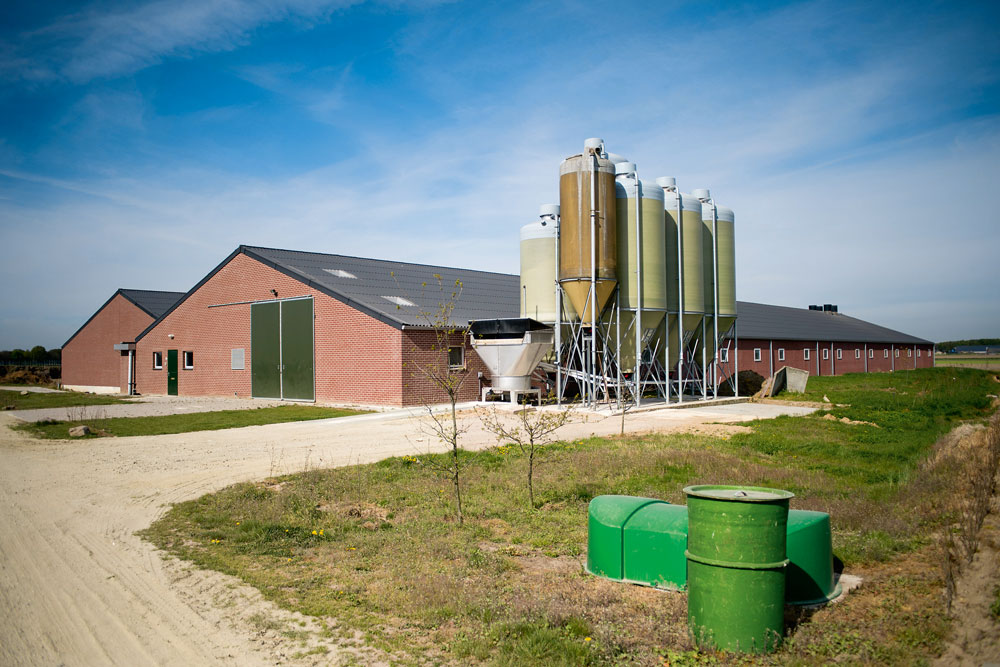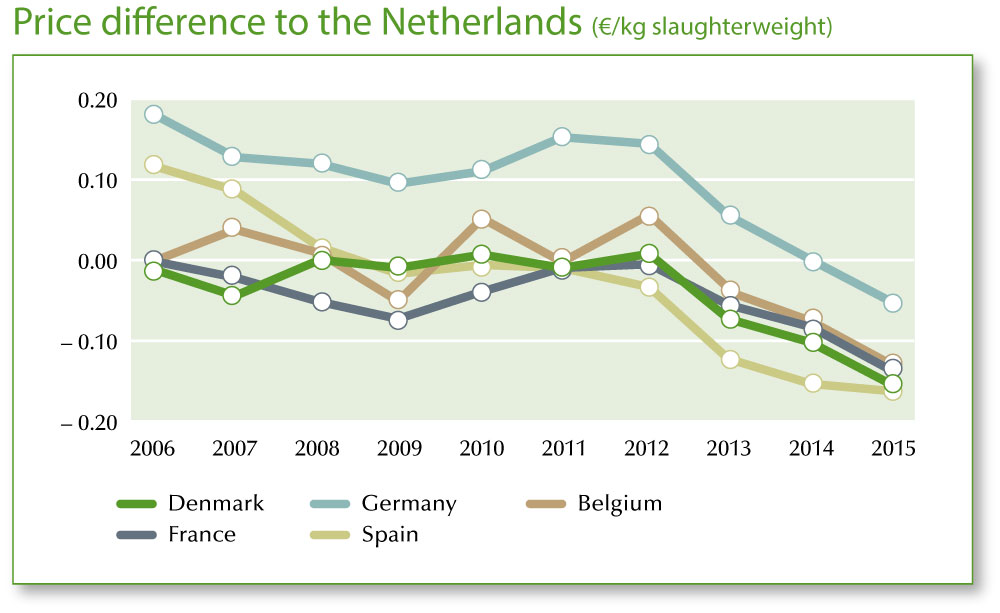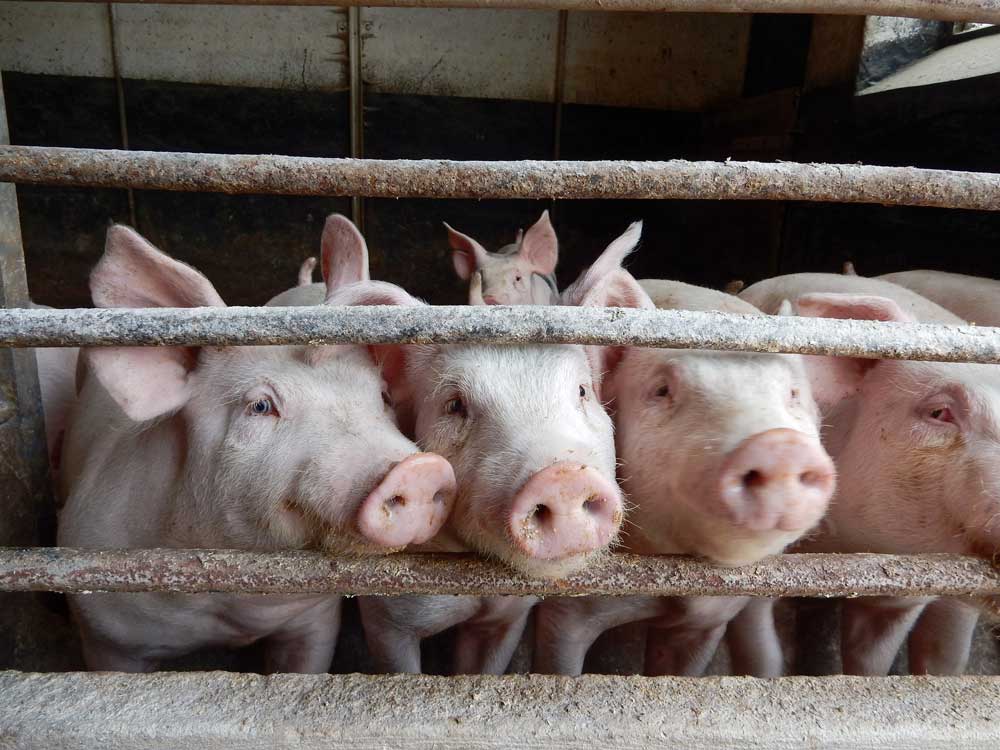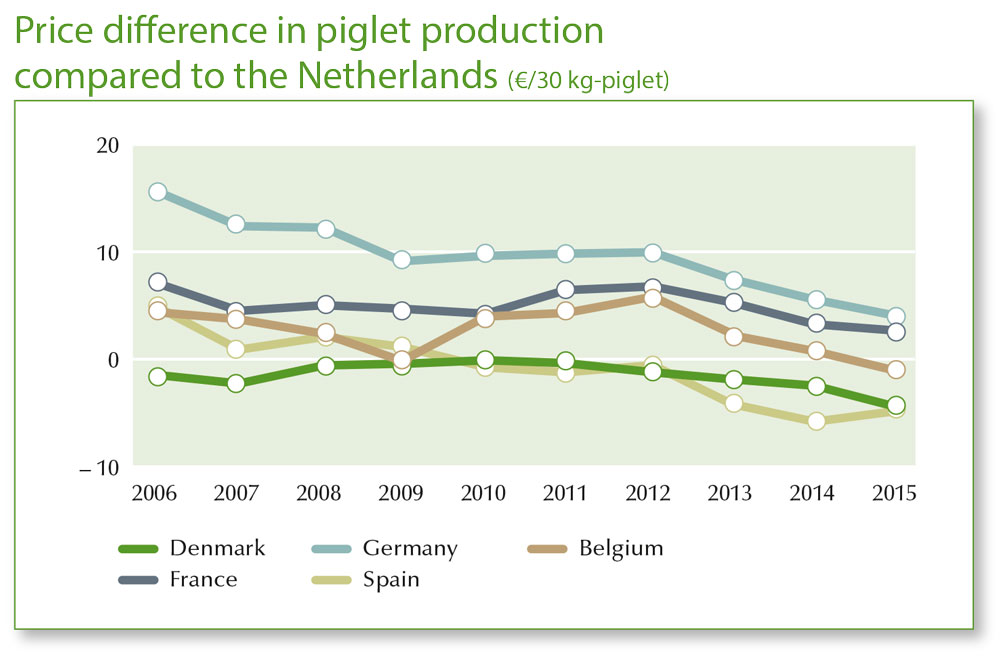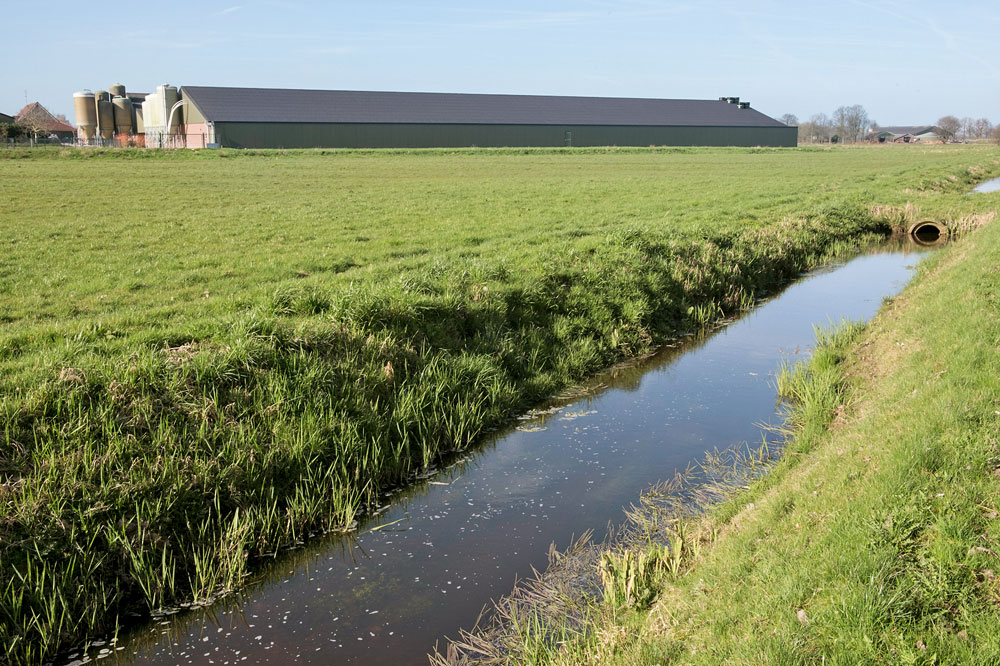Pig production: Cost advantages slip away
By Robert Hoste, Wageningen Economic Research
With 12.5 million pigs (2016), mainly concentrated in the country's southern and eastern regions, the Netherlands continues as one of Europe's great »players« in this sector. The intensive livestock production has a similar history to that of northwestern Germany: not so fertile farmland, large families without earning prospects, particularly for the sons, with nearby harbours offering access to imported feedstuffs and to export markets. With this background there developed a very efficient livestock production, in many cases independent of available farmland, along with upstream and downstream industries that set international standards.
The pole position in pig production won within the sector through such attributes is now under threat
The competitiveness of the producers has dramatically reduced over the last ten years compared with the other important European pig production countries. Back In 2005, production of a kilogram carcass weight of pig meat in Germany cost 0.20 € more than in the Netherlands. By 2015, German farmers were producing pig meat for 0.05 €/kg less than their Dutch competitors. Still worse are the results of similar comparisons with Belgium, France and Spain. In 2005, these countries had production costs similar to those of the Dutch. But ten years later they all had achieved an advantage of around 0.15 €/kg. The graph shows that the Spaniards in particular have very quickly caught up, especially aided by the efficiencies of their often-integrated farrow-to-slaughter production units.
In absolute figures, the lowest production costs in Europe are achieved by pig farmers in Denmark, Belgium, France and Spain with 1.44 to 1.46 €/kg carcass weight. Germany lies in the middle in this respect with 1.55 € and the Dutch, with 1.60 €, only avoid being right at the rear because Italy or Great Britain (1.80 €/kg) have much higher production costs.
The data in this cost comparison are gathered under similar principles from the independent InterPIG organisation, a forum of economists from 17 countries. Basis is a closed production system. Recorded are costs right up to the pigs leaving the farm. This means that transport costs to slaughterhouse are not included, although all opportunity costs such as own labour, own capital or farm-grown feed are included. Applied additionally for the Netherlands is interest for one third of the production rights. These are negotiable and therefore have a value.
Since 2012, the relative cost position in the Netherlands has undergone a rapid downward trend
The figures suggest that this has a lot to do with environment protection costs, in particular the expense of manure disposal. In the Netherlands this represents 0.09 € /kg carcass weight. In Belgium, France and Germany this cost is 0.03 to 0.04 €/kg. Hereby, the average cost in Germany certainly doesn't reflect the very different price levels paid in different regions. Exhaust air filtration costs represent another 0.04 €t/kg. In the Dutch major pig production areas, 50 to 60 % of excess manure must be processed for which regional quotas are applied. Since 1997, if stocking is Increased production rights must be purchased. This is another tool in the country's efforts to control nutrient levels in soil and water. A production right for a feeding pig costs 60 to 100 €. 15 years ago, around 250 € had to be paid. A sow place requires the purchase of 2.74 production rights.
National animal welfare legislation also leads to higher costs
Gestating sows must be managed in groups from the fourth day after service. A proportion of farms experience problems with this sort of management, above all through spontaneous abortion. Barn floor area of 2.25 m2 is required not only for sows, but gilts too. Feeding pigs need 0.80 m2 floor space; the EU rules require only 0.65 m2 and Germany, for example, 0.75 m2 space is the rule.
But there are many other reasons for higher costs. Although feed conversion In Dutch pig farms remains, at under 2.7, the lowest of all recorded countries, this is not being improved upon. And the competition is catching up, especially In Denmark and above all in Spain. It appears that the feeding of entire males, with the associated improved feed conversion, is no longer expanding (although this applies in Germany and Denmark too). Since 2010, this factor has led to a reduction in the Dutch sector income of 0.06 to 0.08 €/kg.
In absolute terms, feed costs are also comparatively high. In Belgium, high feed costs can be explained through the typical ad libitum feeding of slaughter pigs with this system's higher consumption. The average price of feed itself is 20 to 30 €/t higher in the Netherlands than In Germany, Denmark and France. The effective long-term financial advantage of cost-effective by-products from the food industry going into feed has reduced. Labour in the Netherlands is expensive, as shown in the recorded pig sector wages which are the highest in Europe. Apparently, this can be only partly mitigated by more efficiency. Costs for buildings and capital remain within normal northern European standards. A sow place including associated piglet rearing and feeding pig places costs as much as 7000 to 8000 €, in Spain only half this. Notable is, that the different national legislation regarding floor space requirement or for manure storage capacity do not lead to still greater differences.
The financial results have been based on a closed system
If piglet production and feeding pigs to slaughter are seen as separate enterprises, this shows that the Netherlands still performs well in piglet production, although in relation to competitors, performance has decreased. However, pig feeding has, (also) because of the high manure disposal costs, become really expensive. This costs 0.20 €/kg more than in Denmark and still 0.10€ above the German average.
The piglet costs are uniformly based on rearing to 30 kg. Along with other factors such as health status and group size, these results explain why piglets, particularly those from the Netherlands and Denmark, are exported to Germany.
How can farm businesses survive under such cost disadvantages?
First, the figures given above are average ones. Everyone knows that the range of individual profit is a big one; with pigs, this can be 0.20 €/kg carcass weight. Some farmers improve their productivity and enlarge their enterprises. Others give up pig production. Since the 1980s, the number of farms with pigs has halved every decade. The system of tradable livestock quotas increases structural change because with farm business expansion, or when handing the business on, investments have to be made in production rights. Typically, these are financed from own capital so that the stronger become even more strong and the difference between enterprises becomes still greater.
Participation in quality production schemes such as the Dutch »Beter Leven« or »Varken van Morgen« (Pigs of Tomorrow) has not proved »the« solution to the pressures of higher costs: these marketing programmes simply managing to cover the extra costs involved. Only In exceptional situations do they actually lead to more profit.
The costs involved in primary production represent only one factor
Further factors influencing international competitiveness may only be mentioned in brief here because concrete indicators for them are still missing. The most important factor is the human one. The farm structure plays a role, as do degree of cooperation willingness and the networking within a sector. The »upstream« services for pig production are important, i.e. feed, genetics, veterinary services, access to capital and risk management ability. »Downstream« factors include market price, value-added programmes and, of course, organisation of the chain. And finally, the external factors play a role: society concerns (e.g. animal welfare), consumer wishes (taste, food safety…..) and the attitude of the government to agriculture (e.g. as seen through subsidies or approval procedures).
For Dutch agriculture can be said:
Farm businesses are very well positioned in comparison to European counterparts, the »upstream« services actually being world leaders. On the other hand, the sector produces within one of the most densely populated countries in Europe. It Is confronted by a public that has, for a long time, been very critical, and a government that repeatedly imposes new strictures on agricultural production.
What are the prospects for pig production?
Where costs are concerned, an ever-increasing difference between the Netherlands and direct competitors in neighbouring countries means increasing necessity for higher profit. To achieve this, pig producers should work more in unison, not just as primary producers but as a complete chain. After all, pressures and risks in the production chain will increase in relationship to the amount of pig meat exported from the EU to third countries. Additionally, market shocks through disease epidemics or political crises, currency exchange course changes, etc., could have substantial effects. Many farms are outgrowing the traditional model of the family farm; outside capital and wages make these more susceptible to market changes. Also, a society that is turning away from agriculture is a growing risk factor. Because of these insecurities, the strategy of further growth based on exports to third countries has to be considered with caution. Such exports should rather be focussing on added value products. Why not try to sell »Better Leven« products to the higher-earning middle class in China with a suitably attractive »story« built around the products? After all, the USA or Brazil are proving better than the Dutch in the »disposal« of the left-overs of pig carcass processing not always saleable in the west. They produce a kg carcass for around 1€ and not for 1.60 €. These countries have cheap feed, low wages, hardly any manure disposal costs and lower animal welfare standards. It is good that not only 2000 km of poor roads lie between Mato Grosso's pig farms and the exporting harbour at Santos, but also that there's another 10,000 km of Atlantic Ocean to Rotterdam and, on top of this, a customs barrier!



